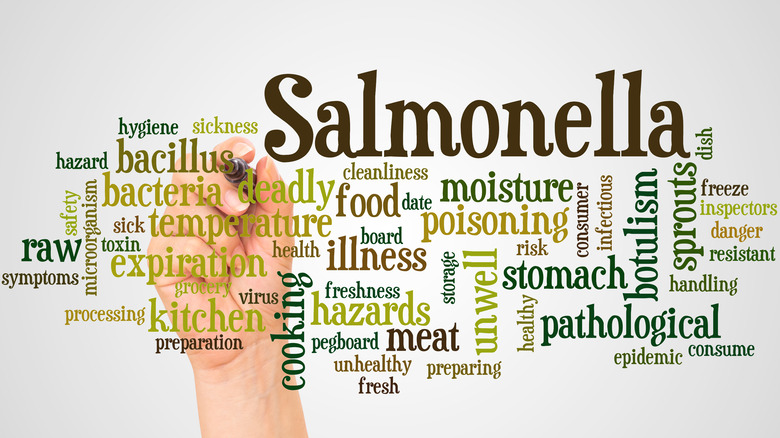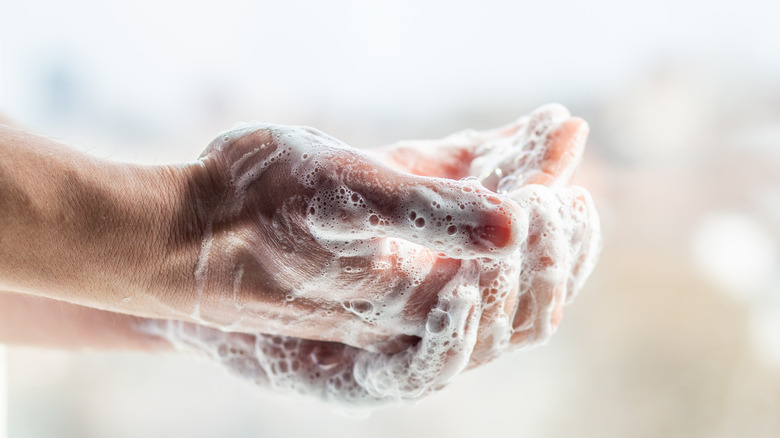What Is Salmonella And How Do You Get It?
Salmonella bacteria can be found in food and water. The bacteria lives in the intestines of humans, birds, and other animals, and it is excreted through feces. When contaminated feces makes its way onto hands and other surfaces, it can in turn be ingested, causing salmonellosis (via Mayo Clinic).
Food that is not thoroughly cooked is the main cause of salmonella outbreaks. In fact, the Centers for Disease Control and Prevention (CDC) reports that the eating of raw or undercooked meat accounts for 94% of the cases reported. Most of these cases are linked to beef, poultry, eggs, and milk. However, those foods are not the only places where salmonella bacteria can live. Any food can harbor the bacteria including water used to clean raw meat or fish. Vegetables and fruits can become tainted with salmonella bacteria by dirty hands or if they are rinsed with contaminated water.
Salmonellosis is highly contagious
Salmonellosis is contagious and it can be spread by someone who may not be showing any symptoms of the illness. It can also live on the surfaces of items such as cups, straws, pipes, and utensils for up to four hours. The bacteria can also be spread to items touched by people who did not wash their hands after using the bathroom or changing a dirty diaper. Surfaces near pets, specifically reptiles and birds, can also become contaminated with pathogens (via Healthline).
Symptoms of a salmonella infection include diarrhea, nausea, fever, stomach pain, and vomiting. In most cases, people recover in about four to seven days without needing any kind of treatment. However, others may need to be hospitalized for severe diarrhea or if the bacteria spreads to other parts of the body (via Food and Drug Administration). Once infected, a person will generally begin to show signs of the illness after 12 to 72 hours (via Healthline).
To avoid a salmonellosis infection, wash your hands after handling raw meat or any animal. Wash vegetables, fruits, and meat before eating, and cook meat thoroughly. In addition, you should clean all surfaces that have come into contact with raw meat (via Healthline).


